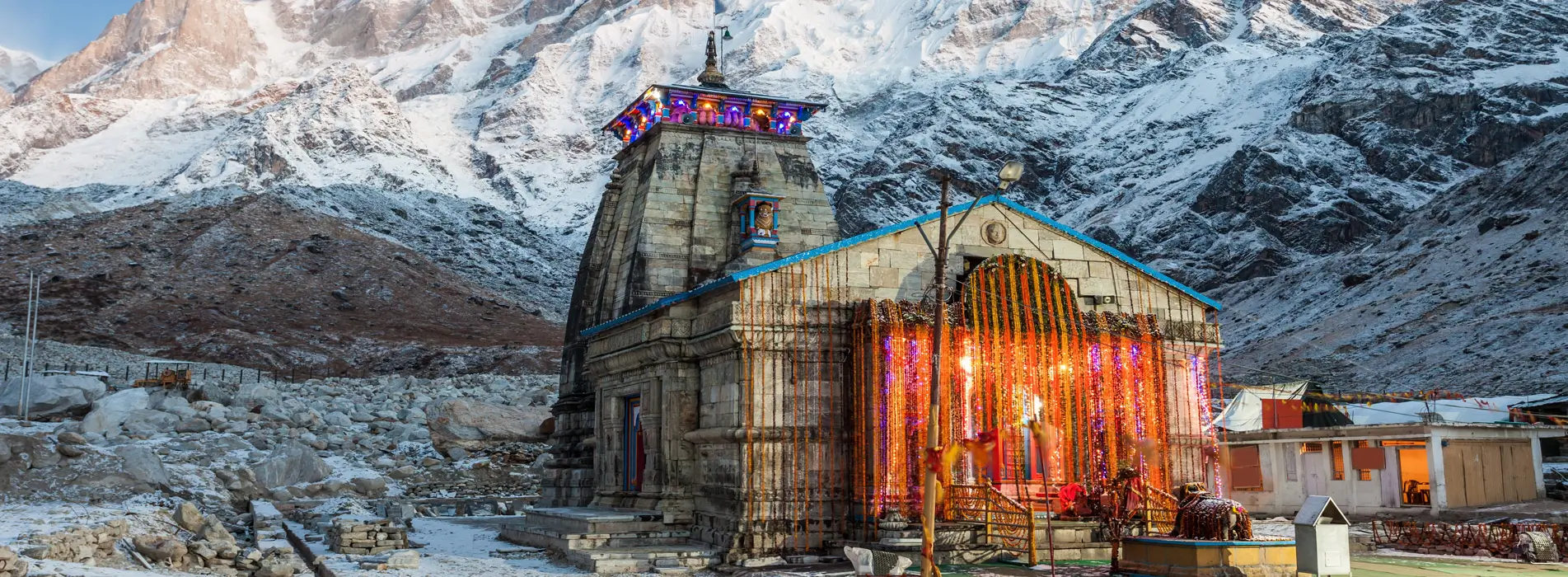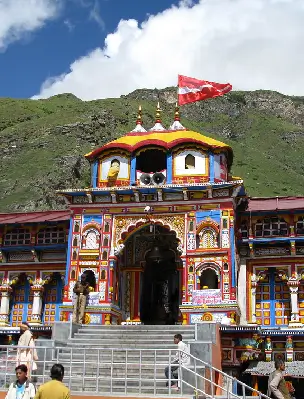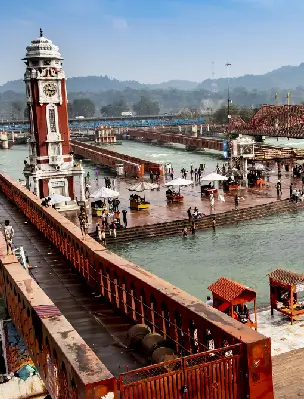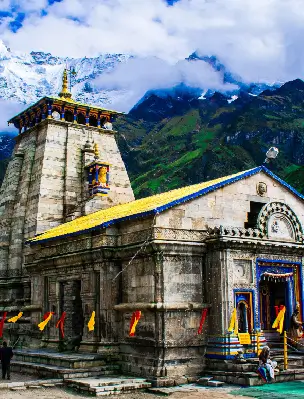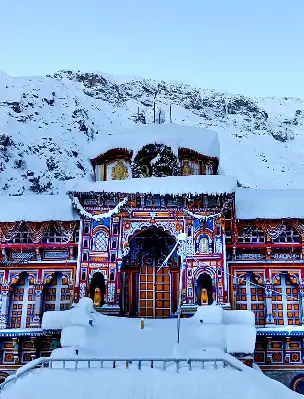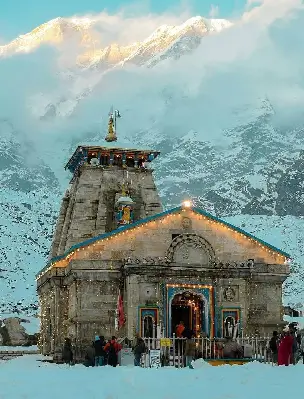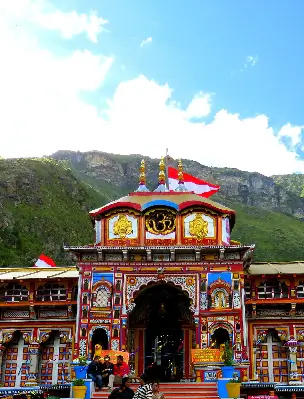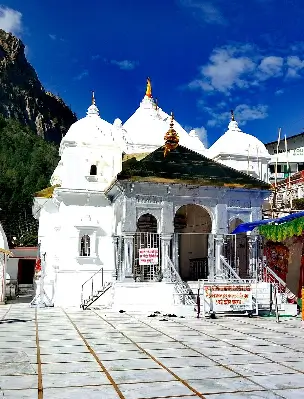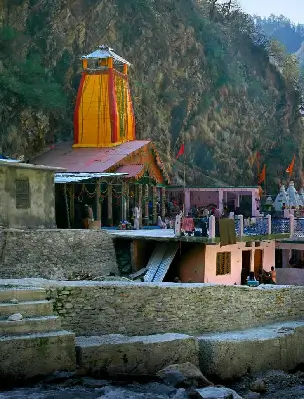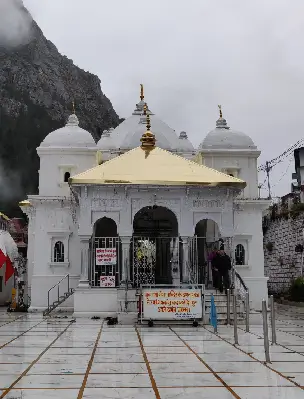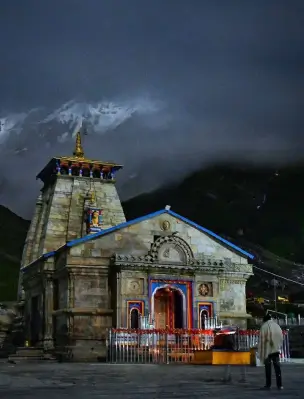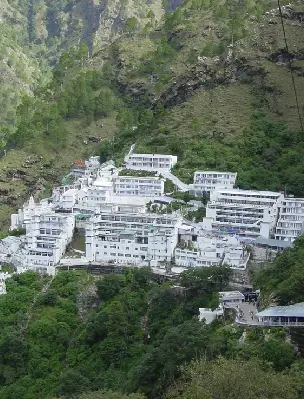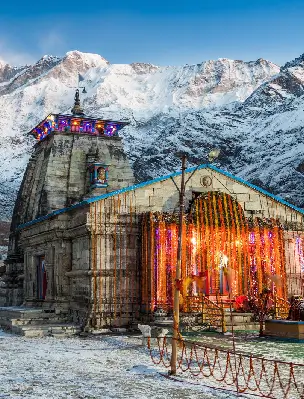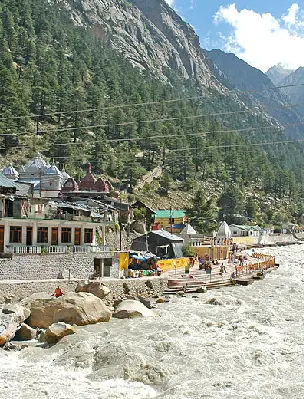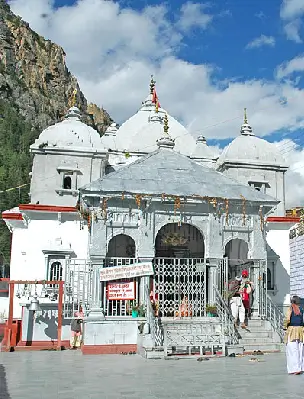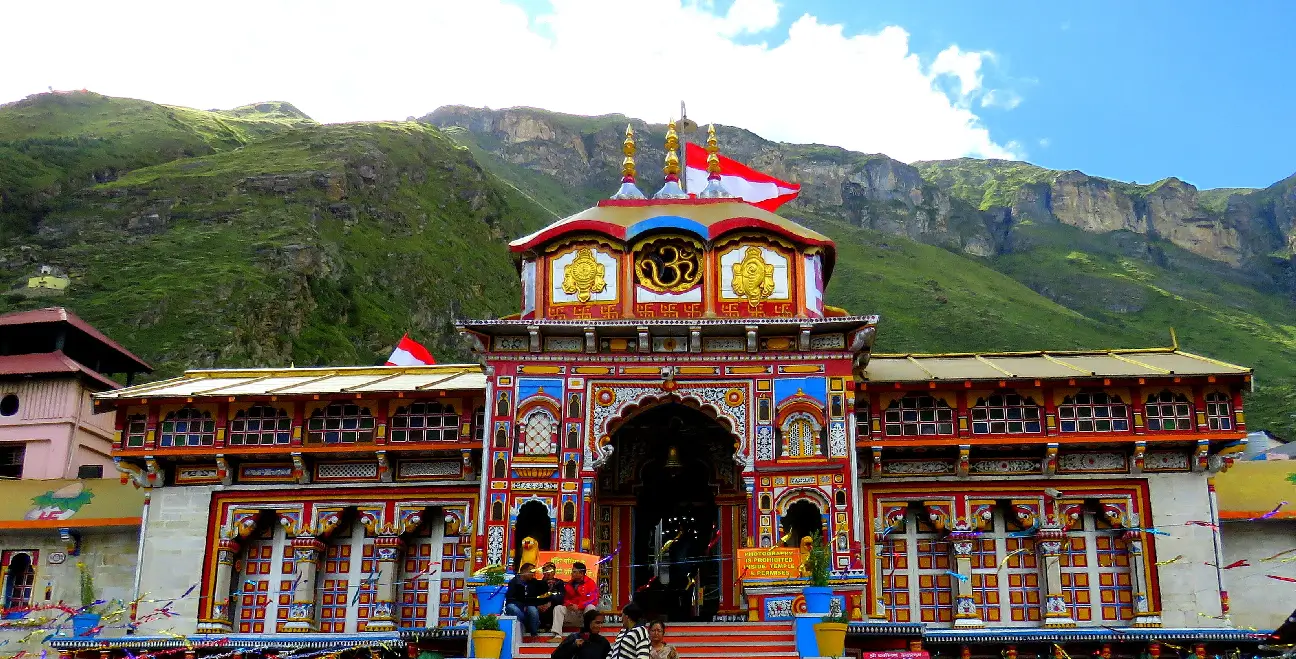Badrinath Kedarnath Yatra with Hemkund Sahib
- 9 Nights / 10 Days





Overview
The amazingly curated journey of two of the most revered temples of Hinduism, Badrinath and Kedarnath, along with the significant Sikh religious site Hemkund Sahib Gurudwara fills your heart with everlasting memories of reverence and beautiful landscapes. Each turn on this journey will unleash yet another overwhelming beauty of the Himalayas. Badrinath, the sacred abode of Lord Vishnu, is where lord Vishnu meditated for thousands of years and thus worshipped in the form of Badrinarayan. At Kedarnath, find solace around the sacred place where Lord Shiva is present in the naturally formed conical lingam. You will also visit the highest Gurudwara Hemkund Sahib with a beautiful trek amid the mesmerising beauty of Himalayan valleys and meadows. Each of the places has a revered significance and is part of great spirituality, but that is not everything to see in the journey. You will also witness the grand Ganga Aarti at Haridwar, visit the Sankaracharya Samadhi, a glimpse of the high peaks of the Great Himalayas, the confluence of Mandakini and Alaknanada rivers, and yogic practices at Rishikesh. The journey also enroutes Guptkashi, where lord Shiva hid from the Pandavas in the mythology associated with Mahabharat.
Highlights of the Tour :
- Har Ki Pauri
- Rishikesh
- Devparayag
- Rudraprayag
- Guptkashi
- Kashi Vishwanath Temple
- Ardh Narishwar Temple
- Sonprayag
- Gaurikund
- Kedarnath Temple
- Narsingh Mandir Joshimath
- Beem Pul
- Saraswati River
- Mana Village
- Hemkund Sahib
- Nandprayag
- Karanprayag
Detail Itinerary :
Delhi - Hardwar (205 Kms. 06 hrs drive)
Upon arrival in Delhi meeting and assistance followed by drive to Haridwar. On arrival at Haridwar check-in at hotel. Evening Visit Mansa Devi temple & Aarti at Har Ki Peri. Overnight stay at hotel.
- Haridwar : Haridwar, lying at the feet of Shiva's hills, i.e., Shivaliks, in the Haridwar district of Uttaranchal Pradesh, is a doorway. Suryavanshi prince Bhagirathi performed penance here to salvage the souls of his ancestors who had perished due to the curse of sage Kapila. The penance was answered and the river Ganga trickled forth forms Lord Shiva's locks and its bountiful water revived the sixty thousand sons of king Sagara. In the traditional of Bhagirathi, devout Hindus stand in the sacred waters here, praying for salvation of their departed elder. It is doorway to the sources of the Ganga and the Yamuna, 3000 to 4500 meters up into the snowy ranges of the central Himalayas. The 'Aarti' worship of the Ganga after sunset and the floating 'dia' (lamp) is a moving ritual.s
Haridwar-Guptkashi 220 kms (Drive 07-08 hrs)
Morning drive to Guptkashi via Rishikesh, Devprayag and Rudraprayag. On arrival Guptkashi check in at hotel. Evening visit Kashi Vishwnath and Ardh Narishwar Mandir. Overnight stay at Hotel.
- Guptakashi : is located in the Northern Himalayan belt within the Mandakini river valley, which has lush green forests. A number of streams and rivulets drain into the main Mandakini River. It has salubrious climate with its elevation being around 1,319 meters (4,330 ft). The snow sparkling view of the Chaukhamba peak is a lovely sight to behold in the morning hours from here. The valley has large magnolia trees (locally called Champa) that provide a sweet scented atmosphere to the place.s
Guptakashi -Kedarnath (Drive 32 kms, trek 14 kms )
Morning drive to Gaurikund (32 kms drive-one way). On arrival Gaurikund start your journey on the tough Trek ahead. On arrival check in to the Hotel / Guest Houses. After freshening up, perform Pooja and also Darshan at Shri Kedarnathji. In the evening also visit Adi Shankaracharya Samadhi behind the Temple. Overnight stay at the Hotel or Guest Houses.
- Kedarnath : is a majestic sight, standing in the middle of a wide plateau surrounded by lofty snow covered peaks. The present temple, built in the 8th century by Adi Shankaracharya, stands adjacent to the site of an earlier temple built by the Pandavas. The inner walls of the assembly hall are decorated with figures of various deities and scenes from mythology. Outside the temple door a large statue of the Nandi Bull stands as guard.
Kedarnath - Pipalkoti (Trek 14 kms, drive 165 kms)
Early Morning Pooja and darshan at the Temple, Morning start trek down to Gaurikund, on arrival meet with driver and leave for Pipalkoti, on arrival Pipalkoti check in at hotel for overnight stay.
- Pipalkoti : is a small and scenic town situated at an elevation of 1,260mts above sea level. It is located 17kms after Chamoli on NH58. Pipalkoti acts a relaxation point for people traveling to Badrinath, Auli, Hemkund Sahib and Valley of Flowers. It is nestled amidst lush green mountains and terraced fields. Pipalkoti provides delightful views of the snow clad mountains and green hills all around.
Pipalkoti- Badrinath (Drive 75 kms)
Morning leave for Shri Badrinath Ji. Enroute visit Narsingh Temple, and Adi Sankracharya Samadhi at Joshimath, than drive to Badrinath On arrival take the holy Darshan and spend time visiting Mana village the last village before the Tibetan border, Byas Gufa, Bheem Pul, Saraswati River, Overnight stay at hotel.
- Tapt Kund : Natural thermal springs on the bank of the river Alaknanda, where it is customary to bathe before entering the Badrinath temple.
- Narad Kund : A recess in the river, near Tapt Kund, forming a pool from where the Badrinath idol was recovered.
- Mata Murty Temple : Devoted to the mother of Sri Badrinathji. Other important temples include Sesh Netra Temple, Urvashi Temple and Charanpaduka.
- Mana Village : Inhabited by an Indo-Mongolian tribe, it is the last Indian village before Tibet.
- Bhim Pul : On the other side of Mana village, a massive rock forming a natural bridge lies over the roaring Saraswati River. It presents a spectacular view of water thundering down through the narrow passage under the rock and is believed to have been placed there by Bhim, the second eldest among the five Pandava brothers.
- Vyas Gufa (cave) : Near Mana Village, this is a rock-cave where Ved Vyas is believed to have composed the Mahabharata and the pauranic commentaries.s
Badrinath - Govindghat - Ghangaria (23 Kms drive + 14 kms trek)
Morning drive to Govindghat. Upon arrival Govindghat stat trek towards Ghangaria. Evening arrival Ghangaria check in at Hotel or Camp for overnight stay.
Ghangaria - Hemkund Sahib - Ghangaria (5 kms trek per way)
Morning stat trek towards Hemkund. On arrival take a Holi dip in Hemkund. Evening trek down to Ghangaria for overnight stay.
- Hemkund Sahib : The high altitude Lokpal lake, known as Hemkund ( 4329 mts.) liesin heavenly environs. A steep trek from Ghangharia leads one to this spot in about four to six hours. It is an important pilgrimage for both Hindus and Sikhs, as well as for people from other faiths. There is a Sikh Gurudwara and a Lakshman temple built on the bank of the lake. Encircled by seven snow clad peaks and their associated glaciers, it reflects its surroundings enchantingly on its crystal clear serene waters. The glaciers from Hathi Parvat and Saptrishi peaks feed the lake and a small stream called Himganga flows out of this lake. As alluded to, in the holy Granth Sahib, Guru Govind Singh, the tenth Guru of the Sikh faith had meditated on the bank of this lake in one of his earlier births. It is widely believed among Sikhs that Guru Govind Singh introduced the features now universally associated with Sikhism. On 15th April 1699, he started the new brotherhood called the Khalsa (meaning the pure, from the Persian word 'Khales') an inner core of the faithful, accepted by baptism (amrit). The five K's' date from this period: kesh (uncut hair) kangha (comb), kirpan (dagger or short sword), kara (steel bangle), and kachh (boxer shorts). The most important is the uncut hair, adopted before the other four. The comb is sometime designated specially as wooden.
Ghangaria - Govindghat - Rudrapryag (14 Kms trek + 132 Kms)
Morning start trek down to Govindghat. On arrival meet to driver and drive to Rudrapryag via Joshimath & Karanprayag. On arrival check-in at hotel. Overnight stay at hotel.
- Rudraprayag :It is the confluence of river Mandakini and river Alaknanda.
- Temples :Rudranath and Chamunda Devi, Koteshwar Temple (3 Kms).
Rudrapryag - Rishikesh (134)
Morning drive to Rishikesh en-route visit Devprayag. Later drive to Rishikesh on arrival checks in at the hotel. Overnight stay at hotel.
Rishikesh - Delhi - Departure (234 Kms.)
Morning drive to Delhi. On arrival Delhi drop you at Airport / railway station for onward destination.
